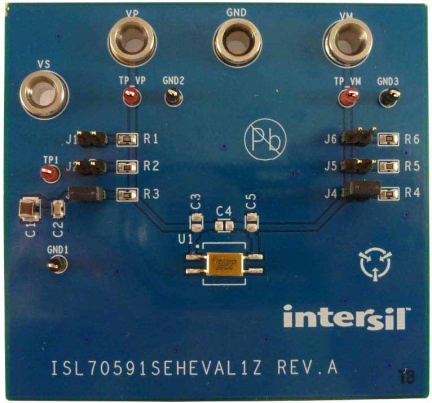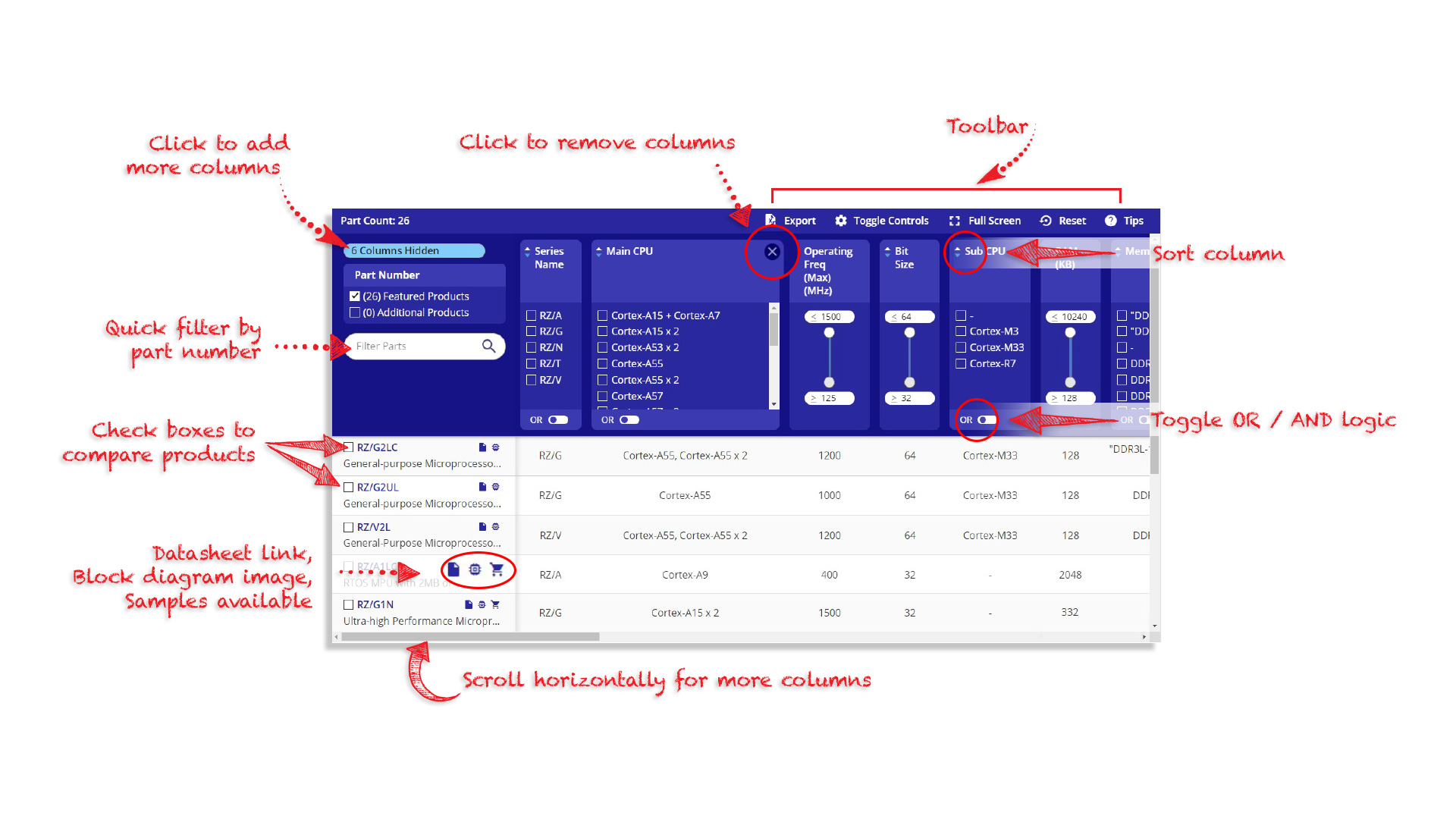Radiation Hardened 100µA and 1mA Precision Constant Current Sources Evaluation Board
概览
简介
The ISL70591SEHEVAL1Z evaluation board provides a quick and easy method for evaluating the ISL70591SEH radiation hardened 100µA precision constant current source designed for thermistor and other resistive sensor excitation applications. Its two-terminal floating type topology allows the load to be connected at the high side (+V pin), low side (-V pin), or at both the high and low sides of the current source. It is specifically designed to operate in the harsh environment of space.
Thorough knowledge of the ISL70591SEH's operation is required to use this evaluation board properly. Refer to the ISL70591SEH datasheet for information about the device's function and performance.
特性
- Convenient test points and connections for test equipment
- Jumpers to select between a short (0Ω resistor), 100Ω resistor or 1kΩ resistor at either the input side or output side, or at both sides of the current source
- Banana jacks for:
- Power
- Ground
- Connecting external loads and circuitry such as external sensors and signal conditioning circuits (for example, instrumentation amplifiers) between VS and VP and/or between VM and GND
应用
应用
- Sensor excitation
- Biasing network
- Low voltage references
- Ramp generators
文档
|
|
|
|
|---|---|---|
| 类型 | 文档标题 | 日期 |
| 手册 - 开发工具 | PDF 555 KB | |
| 报告 | PDF 230 KB | |
| 报告 | PDF 347 KB | |
| 数据手册 | PDF 780 KB | |
| 报告 | PDF 716 KB | |
5 items
|
||
设计和开发
软件与工具
视频和培训
The low dose rate ionizing dose response of semiconductors has become a key issue in space applications. We are addressing this changed market by introducing wafer by wafer low dose rate acceptance testing as a complement to current high dose rate acceptance testing.
Transcript
Philip: Intersil's been in the space market for so long that some of our IC's are still operational on programs like Voyager 1. Longer than many of our competition has been in this business.
Josh: We have product on virtually every satellite, rocket, and shuttle launch that has gone from the U.S. and around the world since the beginning of space programs over 50 years ago. When the space program and satellites were first being launched, there were a variety of requirements that really just focused on high dose rate as a de facto standard for monitoring radiation performance of semiconductors in space. It was found that in space, in the actual space environment that low dose rate was more the actual exposure.
Nick: Low dose rate testing has turned into a really key aspect of space craft design. Because the actual radiation environment in space is low dose rate and is not high dose rate. High dose rate is a testing environment and not an actual natural environment. Certain parts that look very good at high dose rates degrade with amazing lupidity, orders and orders of magnitude worse at low dose rate. That is being addressed by establishing a much upgraded irradiator facility.
Arthur: When manufacturing was first approached with this request, we went out and started looking at what was available out in the market, to purchase a completed tool. And it turned out that there was really no completed product available.
Nick: There are a number of ways in which you can build an irradiator. The least expensive way of doing that is to build a concrete vault with very thick walls.
Arthur: In building the vault was quite a feat. There's an eight foot pipe that had to go into the ground, and it had to be level plumb to the pouring of over eight feet of being less than a quarter of an inch and it also had to be at the height of the final finish of the floor. Then, in order to make the room radiation safe, for all the employees in the surrounding area, the wall thicknesses had to range between four and five feet thick. The radiation source is comprised of 10 Curie pellets into what's called a rabbit, which is basically a pipe that goes up and down a rail. So whenever it's time to irradiate the product, there's a blast of air that blows this rabbit to the top of the irradiator and it mechanically gets locked in and the boards then begin their exposure time. The irradiator is a panoramic irradiator so, in other words, it's a globe and the board system is designed to form the boards around this imaginary globe. And because of that shape we're able to maintain a consistent dose rate across all boards that are loaded into each box and I'd be glad to show it to you but none of you have your Homeland Security approval to look at the tool.
Nick: Our testing facility can run 64 tests in parallel and given that these are two-month tests, we can accommodate well over 300 tests a year.
Josh: So wafer by wafer testing means that we select four random devices off each wafer, we package them up and we put them in the radiation chamber. And they have to come out and pass the SMD limits. If they don't pass the SMD limits, then that wafer gets scrapped. So it gives the customer a confidence level that the devices that we're shipping are rad hard.
Nick: The value to the customer of getting parts that have been through the low dose rate testing program is one of assured performance in the low dose rate environment.
Phillip: By Intersil having this radiation assurance program, where we have both high dose rate and low dose rate capability, that puts Intersil in a leadership position as well as a position to, you know, address this trend for the long haul. Today, customers are able to determine if a part has been radiation tested at a high dose rate level by the RH designation in our part numbering scheme. Going forward, a customer will be able to determine if it's been low dose rate tested by the designation of the EH letters. EH designation means both high dose rate as well as low dose rate testing. We currently plan on releasing all of our rad hard parts in an EH flow. We are also investing heavily in the space business to continue our leadership position. All new parts that have been developed, or will be developed, over the next year to two or three years will also be EH tested as well. On our website you will find information about our lose dose rate acceptance testing. You will find details on the flow, the irradiator itself, as well as the specific parts that are being tested and will be released on this EH flow. There is a very detailed white paper on the website.
Josh: Intersil has continued to make significant investment in our rad hard, new product development as shown by the number of new products that have rolled out over the past three or four years. Intersil was the first IC manufacturer to have in-house ELDRS test capability on a production level. This is a significant investment to put this capability in place and shows our commitment to the marketplace for our next generation of space products and satellite programs over the next 30 to 40 years.

